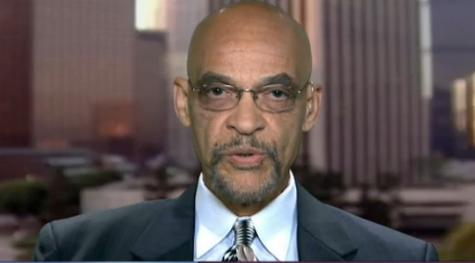Earl Ofari Hutchinson
Thousands of viewers have watched a Facebook/YouTube clip of a knife welding young man brandishing his weapon menacingly at a knot of Columbian police officers. The man taunted, waved his knife, and even lunged at officers. The officers cordoned him off, waited patiently, and continued to talk to him. The stand-off ended when one officer rushed the suspect from behind with a deft move that knocked the knife out of his hand. He was quickly subdued. The point. Neither he, the officers, or any civilians were injured. The point further, he was taken alive. Here’s the clip of the commendable action by Columbian police.
https://m.facebook.com/story.php?story_fbid=986462278043524&id=126298060726621&sfnsn=mo&d=n&vh=e
Why is he alive, then, and Walter Wallace Jr. isn’t? Wallace also had a knife. He had a mental challenge. Yet, He was gunned down by Philadelphia police. The killing sparked a couple nights of violence in the city. Philadelphia police and city officials were disturbed at the Wallace slaying. They should be. The Wallace slaying was just the latest in the long and never-ending train of police killings of young Black men. And always, the tormenting question: Did they have to die? Weren’t there other ways that police could have handled the incident without gunplay?
Columbian police answered those questions convincingly. They weren’t the only ones. There have been other instances where police also subdued a knife welding suspect without resorting to deadly force. In almost all cases, though the suspects have not been young Black men. Witnesses to the Wallace slaying of Wallace also provided a partial answer. They shouted at police to taser him or use other non-lethal means to subdue him. Wallace’s history of mental illness was known by his family and others. They demanded to know why the police and not trained medical personnel were the first responders to the scene.
The fact that there are other ways to subdue a suspect without resorting to lethal force, and that seemingly the ones most likely to die in a hail of bullets are Black suspects deepens anger and suspicion that this is just another example of police being the judge, jury and executioner of Blacks. Philadelphia police officials, city officials and the DA promise to thoroughly investigate the circumstances surrounding the Wallace shooting. There’s little consolation in that since there’s rarely any action taken against the officers involved in dubious shootings.
The police agencies that are on the hot seat for a dubious shooting or another act that results in the death of a civilian investigate themselves. There is almost never an independent, outside agency that will conduct a truly impartial investigation. And when the cops are hauled into a court docket for overuse of deadly force, it’s near impossible to convict. Their defense lawyers are top guns, with lots of experience defending police officers accused of misconduct. Police unions bankroll their defense and spare no expense. The Philadelphia police union wasted no time in defending the shooting of Wallace as justified. Cops rarely serve any pre-trial jail time and are released on ridiculously low bail.
If the cops are tried by a jury, police defense attorneys seek to get as many middle-class people, whites and even Blacks and Latinos, on the jury as possible. The presumption is that they are much more likely to believe the testimony of police and prosecution witnesses than Black witnesses, defendants, or even the victims.
There is no ironclad standard of what is or isn’t an acceptable use of force in police misconduct cases. It often comes down to a judgment call by the officer. In the Rodney King beating case in 1992 in which four LAPD officers stood trial, defense attorneys painted King as the aggressor and claimed that the level of force used against him was justified.
Based on past practice, there’s little reason to think that the officers that shot Wallace will not as always resort to the standard defense that their life was in danger. That will be enough. There’s even less reason to think that this case as the other cases where mentally challenged Black suspects are shot, will answer the question,” Why do they have to shoot them?” Then again, this isn’t Columbia.
Earl Ofari Hutchinson is an author and political analyst. He is the author of the forthcoming Why Black Lives Do Matter (Middle Passage Press). He is a weekly co-host of the Al Sharpton Show on Radio One. He is the host of the weekly Hutchinson Report on KPFK 90.7 FM Los Angeles and the Pacifica Network.


3 thoughts on “Did They Really Have to Shoot Walter Wallace Jr.?”